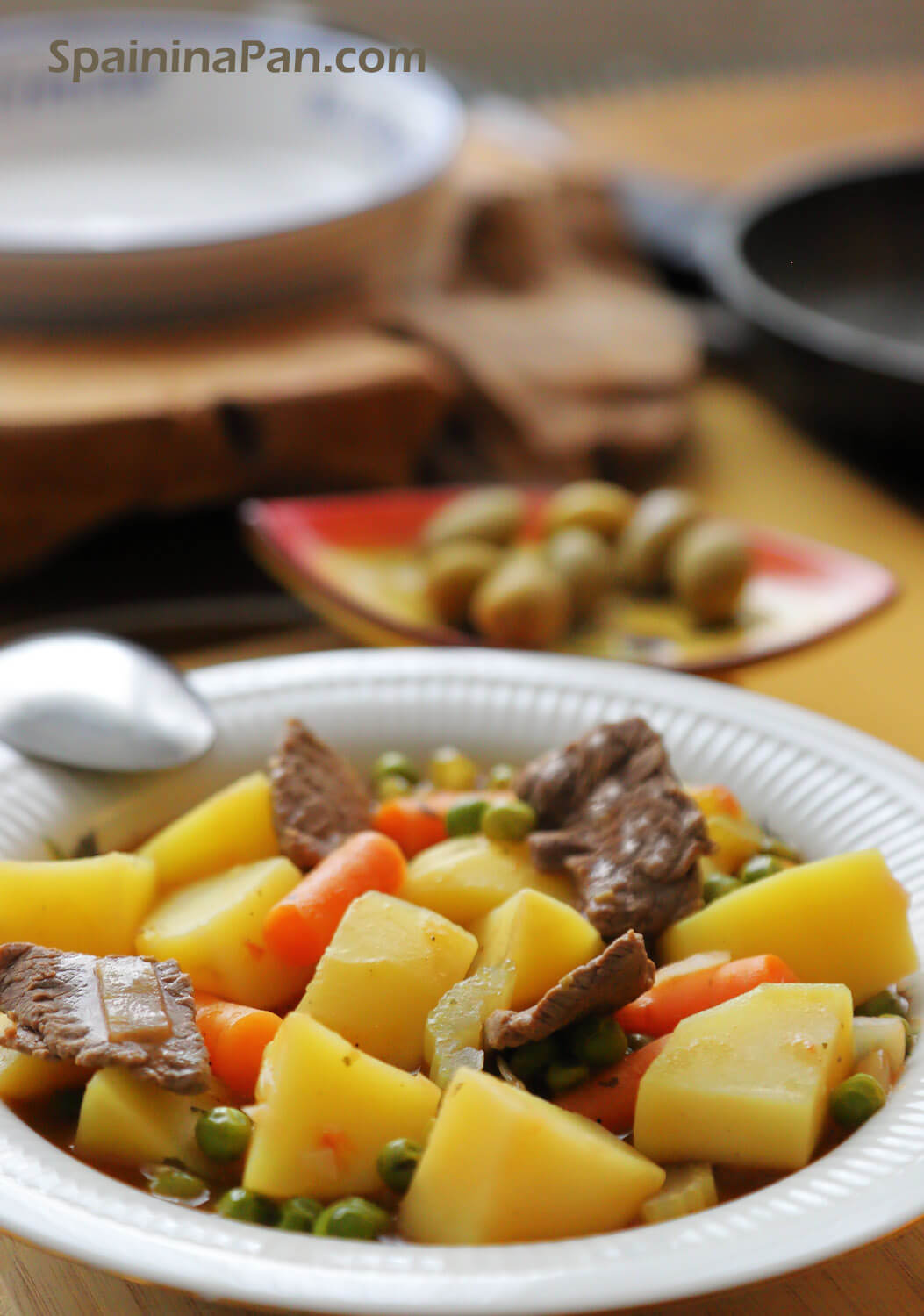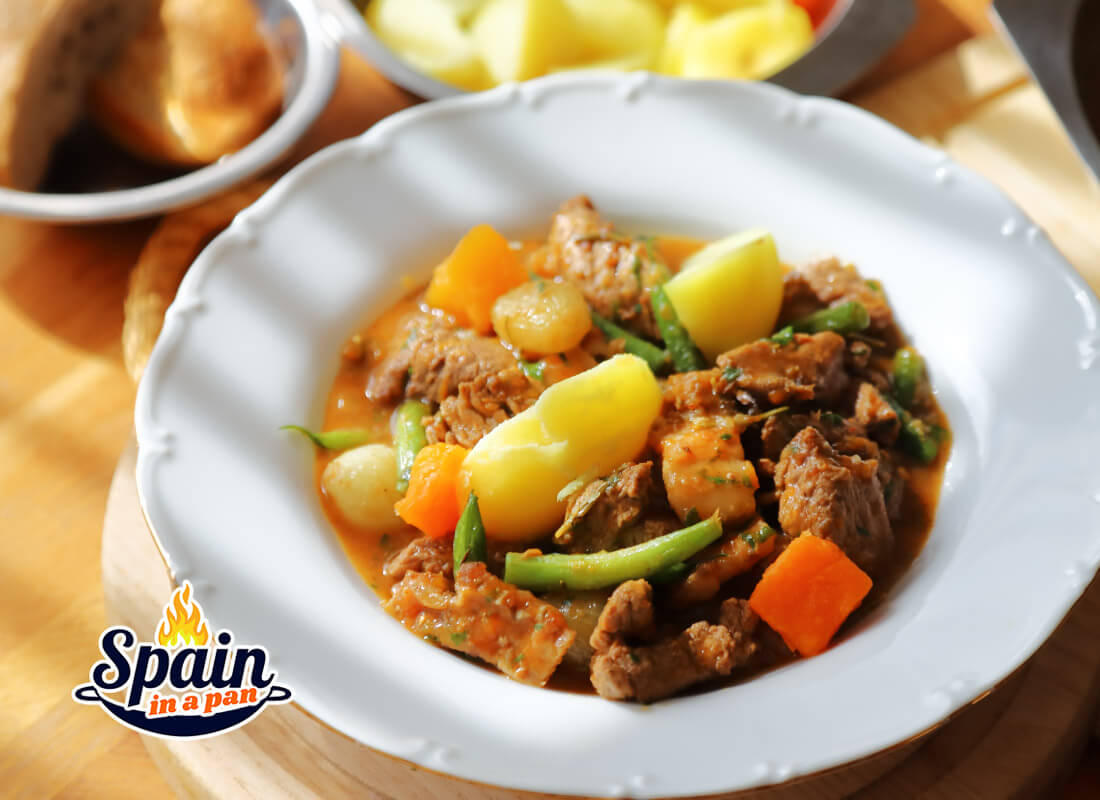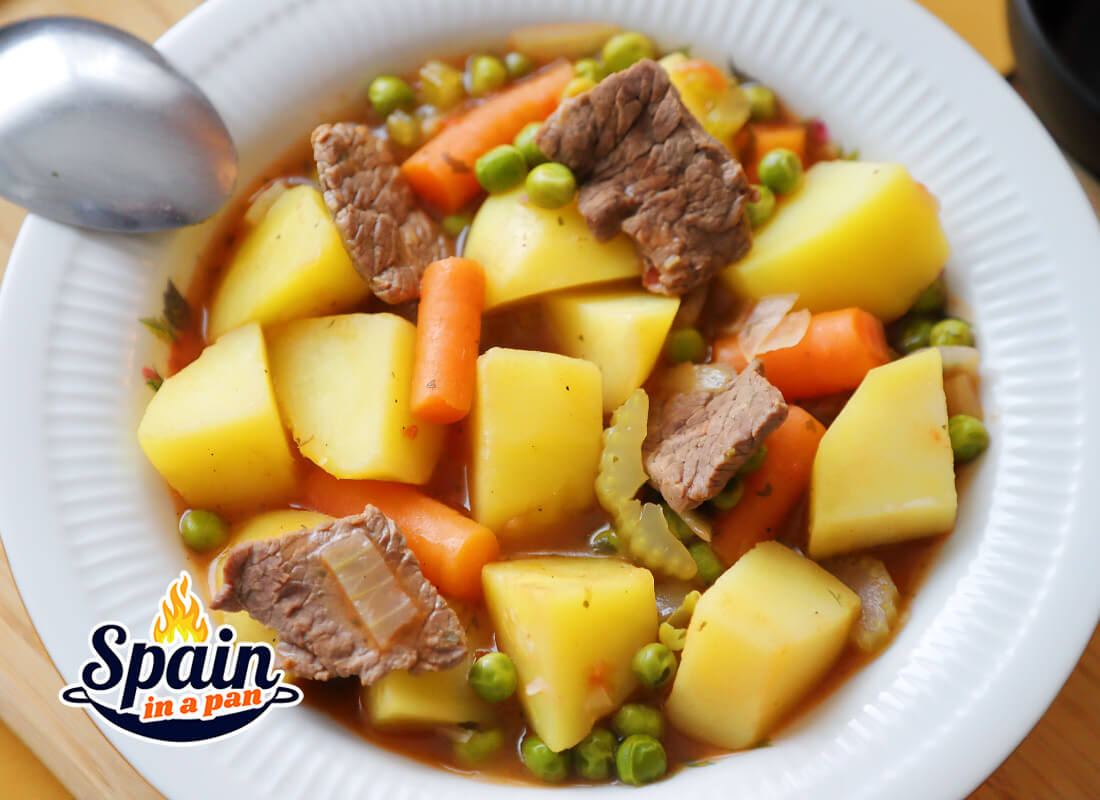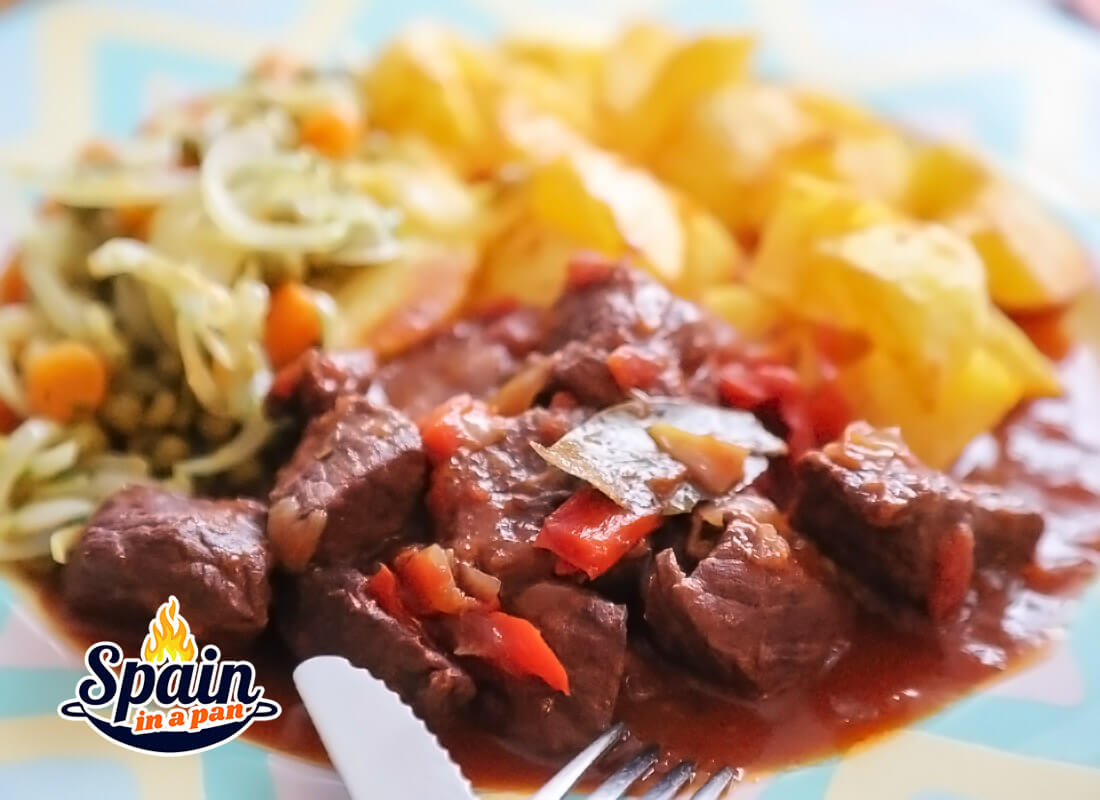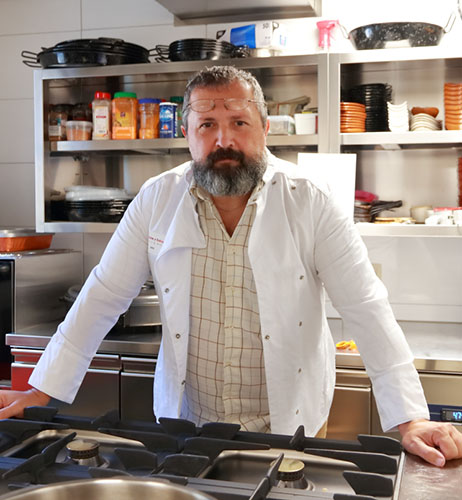- HOME
- Beef Stews
Classic Spanish Beef Stew Recipe (Guiso de Carne): Comfort in a Pot
(Estofado de Vacuno)
By Edu Valor / Author - Spanish Chef
If there’s one Spanish dish that feels like home, it’s this one. A traditional Spanish beef stew recipe—or guiso de carne—is about as comforting and familiar as it gets.
It’s one of those meals that every family seems to make their own way, with small variations depending on the region, the season, or simply what’s in the kitchen.
Need more beef stew recipes? Scroll down or click on the orange button below (Edu's beef stews).
Once you’ve learned the basics of a proper guiso, you can cook dozens of variations. And best of all? It’s a one-pot meal that doesn’t require fancy tools or hard-to-find ingredients. Just time, patience, and good ingredients.
Why This Stew Works
What makes Spanish stews special is how simple ingredients come together to create incredible depth of flavor.
Think of tender chunks of beef simmered slowly with onion, garlic, tomatoes, carrots, potatoes, and a splash of wine. The result is a thick, rich broth you’ll want to mop up with a hunk of crusty bread.
At home, we’d serve this with peas, celery, and artichokes when they were in season. Sometimes with chickpeas, sometimes not. But the heart of it was always the same—slow-cooked beef, plenty of vegetables, and love.
And yes—have that bread ready, because the broth is almost the best part.
Let's Make a Terrific Spanish Beef Stew Recipe!
Ingredients for 4 servings
Preparation: 15 minutes
Cooking: Approx. 1h30 for the meat on low fire, 15-20 minutes for the potatoes.
*Measurements in metric and USA Imperial system. For British/Canadian measurements please use the metric conversion calculator.
- 500g/1 lb beef
- 1 kg/2,2 lb potato chunks
- 1,3 liter/ 5,5 cups beef stock
- 70g/2.5 oz tomato cubes
- 1 celery stalk
- 2 medium carrots
- 1 onion, diced
- 150g/5,5 oz peas
- 1 tsp flour
- 1 tbsp minced parsley
- 2 tsp paprika
- a few strings of saffron or 1/2 tsp yellow food dye
- 1 bay leaf
- Salt and pepper
- 1 tsp red wine vinegar (optional)
Instructions
- Cut the meat in large cubes and seal them quickly in some olive oil on high fire. When meat is lightly browned add the onion and tomato. Lower fire to medium.
- Season everything with salt and pepper and add the flour with paprika and bay leaf. Stir everything!
- Add the carrots, celery and if you want, the red wine vinegar. Stir again.
- Pour in the beef stock. If necessary pour extra water to submerge the meat. Add the saffron or food dye. Bring to a boil and lower fire to low. Taste the broth, add salt if necessary. Let it simmer for an hour and a half with the lid on.
- Add the potatoes with parsley in the last 15 minutes, stir and continue simmering with the lid on until potatoes are tender. Taste and season again if necessary.
TIPS:
- If necessary add HOT water to continue stewing. Never use cold water in the middle of cooking.
- Sealing means frying the meat surface quickly to keep the inside tender and raw.
- Use a stew pot with lid.
- It's ok to cook the stew for longer than 1,5 hours if the potatoes aren't done yet.
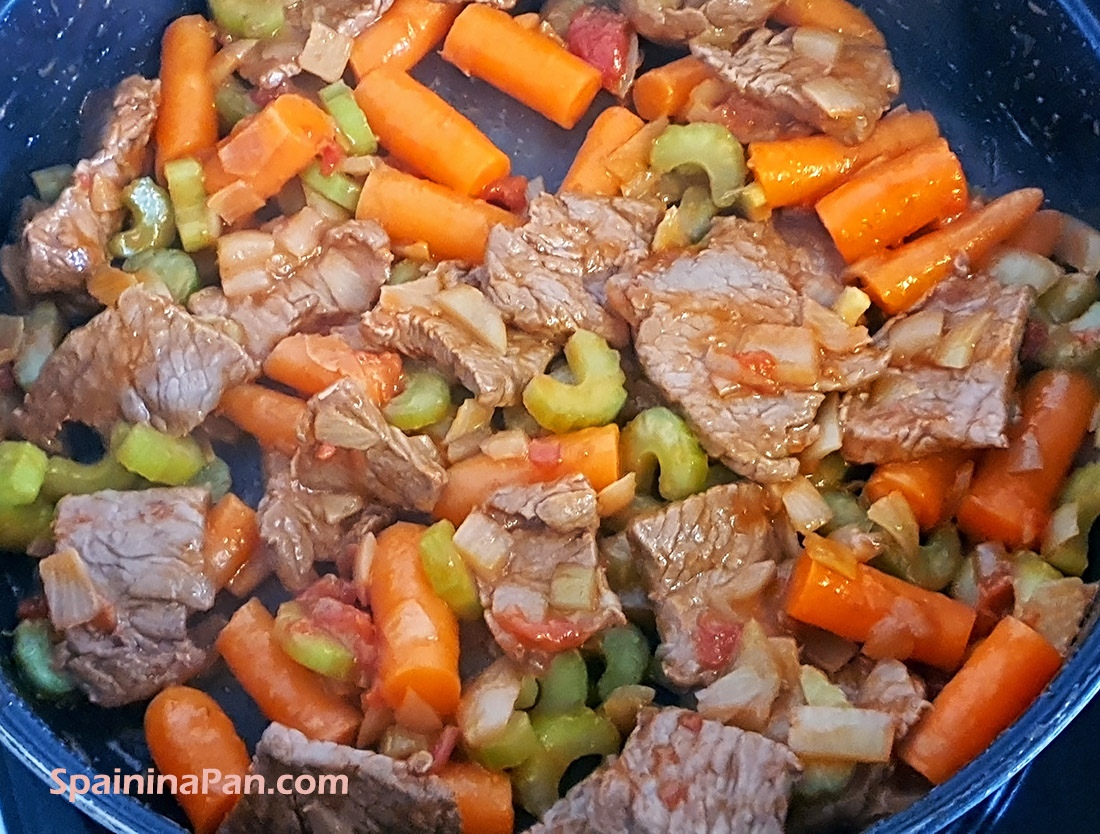 Browned beef and sauté.
Browned beef and sauté.
What You Will Need
- Stew pot
- Spatula or wooden spoon
- Meat knife
- Paring knife
- Cutting board
- Measuring beaker
A Stew with History
The technique of estofar (stewing) has deep roots in Mediterranean cooking. Even ancient texts—yes, including the Bible—describe dishes that resemble stews.
But in Spain, the art of stewing evolved into something unique. Over centuries, cooks adapted the technique to local ingredients and tastes.
By the Middle Ages, guisos were already commonplace. These hearty meals were practical, economical, and perfect for feeding a family.
Slow cooking helped tenderize tougher cuts of meat, while vegetables and legumes added volume and nutrition. Today, you’ll still find this dish at local taverns, Sunday family meals, or simmering in clay pots in traditional kitchens across Spain.
The Technique: Why We Stew
So why do we stew in the first place?
Because it works. Estofar means cooking slowly, over low heat, with a lid on. This traps moisture and allows the flavors to blend slowly over time.
The result? Meltingly tender beef and a deeply flavorful sauce that tastes like it’s been cooking all day—because it has.
The lid also reduces evaporation, so you end up with a thick, luxurious broth instead of a thin soup. And everything—beef, carrots, potatoes—absorbs those rich, savory flavors as it cooks.
What You’ll Need (Basic Ingredients)
Every Spanish household has its own version, but here’s a typical base:
- Olive oil (always extra virgin, if possible)
- Onion and garlic
- Carrots and celery
- Ripe tomatoes (or canned tomatoes)
- Red wine (optional, but recommended)
- Bay leaf, black pepper, and a pinch of paprika
- Beef chuck or stew meat, cut into chunks
- Potatoes
- Peas or green beans (optional)
- Artichokes (optional and seasonal)
- Salt and water or beef broth
That’s it. No tricks. Just good ingredients cooked slowly until they transform into something amazing.
Regional Variations
There's a lot of variety when it comes to stews. For example:
- In Andalusia, you might find cumin or saffron added.
- In Castile, chickpeas or white beans are common additions.
- In Catalonia, you may see dried fruits or nuts in festive versions.
- And in Basque Country, beef stews sometimes include red peppers or even txakoli (a local wine).
But no matter where you are, the spirit of the dish is the same: warmth, comfort, and satisfaction.
Final Thoughts
A Spanish beef stew recipe is more than just a dish—it’s part of daily life and family tradition.
Whether you grew up with it or are trying it for the first time, it’s the kind of food that brings people together around the table. And in the end, that’s what cooking is really about.
So grab a pot, pour yourself a glass of wine, and let the stew do its thing.
Buen provecho!
